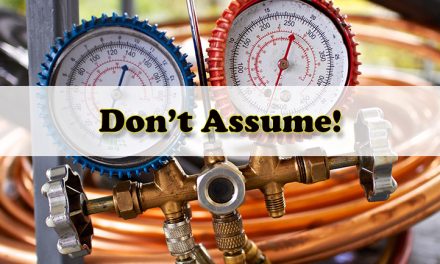Airflow: The Second Step in Airside Performance
Airflow is the second step on the path to performance. It is the lifeblood of a forced-air HVAC system, and when it is outside specified parameters, the entire system and every component suffer. You would think since airflow is so important, more HVAC professionals would pay attention to it. Unfortunately, airflow is the most misunderstood and ignored part of our industry.
The path to performance can get confusing once you get to the airflow step. There are so many variables to consider. Follow the same pattern described in the previous article with static pressure measurement and keep it simple. Otherwise, you will quickly get lost in the weeds.
Airflow Principles
Airflow is a general term that’s easy to misinterpret. Our industry measures airflow in cubic feet per minute (cfm). To visualize one cfm, imagine a single 12 x 12 x 12 cardboard box of air. This represents a cubic foot. The number of cubic feet per minute is known as airflow.
As you learn airflow principles, it helps to associate it with three rules. You’ll find that many of the complicated issues you regularly encounter tie to one or more of these rules.
1. Airflow Takes the Path of Least Resistance. When you study how air circulates inside a duct system, it takes the largest path as it moves away from the fan. Since air pressure is near the fan, it’s much easier for air to pass through a large duct leak (or multiple small leaks) there than travel through the duct system to a supply register or return grille. Also, consider poorly installed filter racks. This condition allows unfiltered air to go around the air filter instead of going through it. As this unfiltered air goes around the air filter, it leads to indoor air quality (IAQ) and prolonged equipment maintenance issues.

2. One CFM In = One CFM Out of the HVAC system blower. For every cfm of air that goes into the blower wheel, one cfm of air must also come out. Let’s say you have a four-ton system operating in cooling mode. You measure airflow at the air-handling equipment and determine that you’re circulating 1600 cfm through the blower. This means you have 1600 cfm of air pulled into the blower and 1600 cfm of air discharged from it.
3. Airflow Is Always Highest at the Air-Handling Equipment just as static pressure is. Most duct systems leak and as air moves toward the registers, the total air volume in the duct system decreases. There is only so much air to move from the air-handling equipment, through the duct system, and to individual rooms. When a duct system loses airflow through duct leakage, you’ll never be able to deliver full comfort to your customers.
Click below for the next page:













Recent Comments